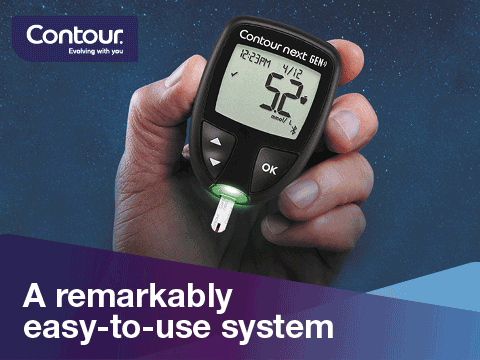
The basics of managing type 2 diabetes
Managing type 2 diabetes involves following a basic set of principles or guidelines in order to reach target blood glucose levels. There are four cornerstones for the management of type 2 diabetes which will help you meet these goals:
Eat healthy foods
A healthy meal plan is crucial to helping you manage your diabetes, and ensuring that your blood glucose levels are controlled.
Exercise regularly
Everyone – whether or not they have diabetes – benefits from regular exercise. Well-known health benefits include weight loss, stronger bones, improved blood pressure control, lower rates of heart disease and cancer, and increased energy levels. Regular exercise also has special advantages if you have type 2 diabetes, because it improves your body’s sensitivity to insulin and helps manage your blood glucose levels.
Lose weight, if needed
Excess weight is associated with higher blood glucose levels and complications, so it’s important for people with diabetes who are overweight to try and lose weight. The good news is that studies have shown that losing even a few pounds – between 5% and 10% of your initial body weight – can improve diabetes control and reduce the risk of complications such as heart disease.
Take your medications as prescribed by your healthcare team
A number of different diabetes medications are available to help people with type 2 diabetes control their blood glucose levels. Some of these are in pill form, while others are injected subcutaneously (under the skin) with a needle. Taking them exactly as prescribed by your healthcare team will help to ensure that your blood sugar levels stay in their target range.
It’s not unusual to have some concerns
Some of the common concerns that people have about managing type 2 diabetes – whether they’ve just been diagnosed, or have lived with the disease for some time – include controlling blood sugar, avoiding complications and injecting insulin. However, managing type 2 diabetes doesn’t have to be incredibly complicated. There are four vital steps you can take to manage your condition successfully:
- Get educated: Learn as much as you can about diabetes and how to manage it. Check out many of the expert blogs and articles on this website, discuss your management with the diabetes health care team and visit a diabetes education centre.
- Follow the diabetes “ABCDEs”: A1C, blood pressure, cholesterol, drugs, exercise/eating and smoking cessation. By following these recommendations, you may lower your risk of heart attack or stroke.
- Follow everyday guidelines for healthy living with diabetes. Following a diabetes diet, getting regular physical activity and practicing diabetes self-care guidelines such a blood glucose monitoring and checking your feet daily can help reduce your risk of complications.
- Get your recommended medical check-ups and tests. It is important to see your diabetes health care professional every 6 months. Your A1C, blood pressure, weight, feet and overall self-care plan will be checked, and other tests will be arranged based on your individual needs.
Type 2 affects all age groups
People of all ages can be affected by type 2 diabetes. While the disease used to be diagnosed almost exclusively in adults and elderly people, it is now affecting adolescents and younger adults. There are different issues regarding management in different populations.

There’s more to monitor than just sugar
Recognizing and treating other conditions that are common in people with diabetes is another key area for management. There are several conditions that co-exist with diabetes, such as high blood pressure or high cholesterol. These are conditions that can occur in a person without diabetes, but are also more common for someone living with diabetes. Regular monitoring of these conditions is important as part of your diabetes management plan.
Some complications develop gradually but they may also appear at the time of diagnosis, since many people do not realize that they have been living with diabetes for several years. If you have diabetes possible complications may include:
- Cardiovascular disease, including heart attack and stroke
- Eye disease, including damage to the retina (retinopathy), glaucoma or cataracts
- Kidney disease (nephropathy)
- Nerve damage (neuropathy)
- Foot problems, which may lead to ulcers and potentially amputation
Monitoring tests are recommended to help you delay or prevent complications.

Stay positive
Finally, remember that a positive and realistic attitude towards your condition can help you manage type 2 diabetes more effectively. If you have been recently diagnosed with type 2 diabetes, you can manage your condition by putting some basic principles into action.

